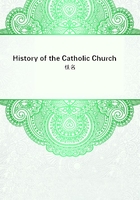
第314章
From 1632 till 1640, though the Deputy was doing his best to rob a large portion of the Catholic owners of their property on the ground of defective titles, and though in many districts the Protestant bishops and ministers created considerable difficulties for their Catholic neighbours, still the religious persecution was carried out only in a half-hearted manner. The king was shrewd enough to recognise the important part that might be played by the Irish Catholics in the civil struggle that he foresaw, and he was anxious not to antagonise their leaders. This period of comparative calm was providential for the Church in Ireland, by enabling it to organise its forces and to prepare for the terrible days that were soon to come. In accordance with the advice given by Archbishop Lombard years before, Rome decided to fill several of the Sees that had been left vacant. Hugh MacCaghwell (/Cavellus/), a distinguished Irish Franciscan, who had been instrumental in founding the College of St. Anthony at Louvain, and whose theological works caused him to be regarded by his contemporaries as the ablest theologian of the Scotish school in Europe, was appointed Archbishop of Armagh (1626), but he died in Rome a few weeks after his consecration. Less than two years later it was decided to transfer Hugh O'Reilly from Kilmore to the primatial See (1628). Thomas Fleming had been appointed to Dublin in 1623, and despite the efforts of his enemies he succeeded in eluding the vigilance of those who wished to drive him from Ireland. Malachy O'Queely, who had acted for years as vicar-apostolic of his native diocese of Killaloe, was appointed to Tuam (1630) in succession to Florence Conry, and Thomas Walsh, a native of Waterford, was promoted to the See of Cashel (1626). Amongst the distinguished ecclesiastics who were promoted to Irish dioceses during the reign of James I. and Charles, were the learned David Rothe (Ossory, 1618), Roche MacGeoghan (/Roccus de Cruce/), who had done so much for the restoration of the Dominican houses in Ireland (Kildare, 1629), and Heber MacMahon (Down, 1642, Clogher, 1643). As a result of the long persecution and of the absence of bishops from so many dioceses a certain amount of disorganisation might be detected in several departments, and to remedy this provincial synods were held to lay down new regulations, and to adjust the position of the Church to the altered circumstances of the country. A synod was held at Kilkenny (1627) which was attended by bishops from Leinster and Munster; another very important one, the decrees of which were confirmed by the Holy See, was held for the province of Tuam in 1632, and a third attended by the Leinster bishops was held in the County Kilkenny in 1640.[48] The Irish colleges on the Continent continued to pour able and zealous young priests into the country, while the colleges for the education of the Franciscans, Dominicans, and Jesuits supplied new recruits to replenish the ranks of the religious orders. The Capuchin founded Irish colleges on the Continent, at Lille, Antwerp, and at Sedan, and so earnestly did they work in Ireland that a special letter in praise of the Capuchins was forwarded to Rome by a number of the Bishops in 1642. The results of this renewed activity were soon apparent in every part of the country.
Thus, for example, in a report presented (1631) from the diocese of Elphin, then ruled by Bishop Boetius Egan, it can be seen that although all the churches, including the cathedral, had been destroyed or taken possession of by the Protestants, there were at the time forty priests at work in the diocese; the decrees of the Council of Trent had been promulgated; the parishes had been re-arranged, and the learning of the parish priests appointed had been tested by examination; regular synods, visitations, and conferences of the clergy were being held, and steps had been taken to ensure that the people should be instructed fully in their religion.[49]